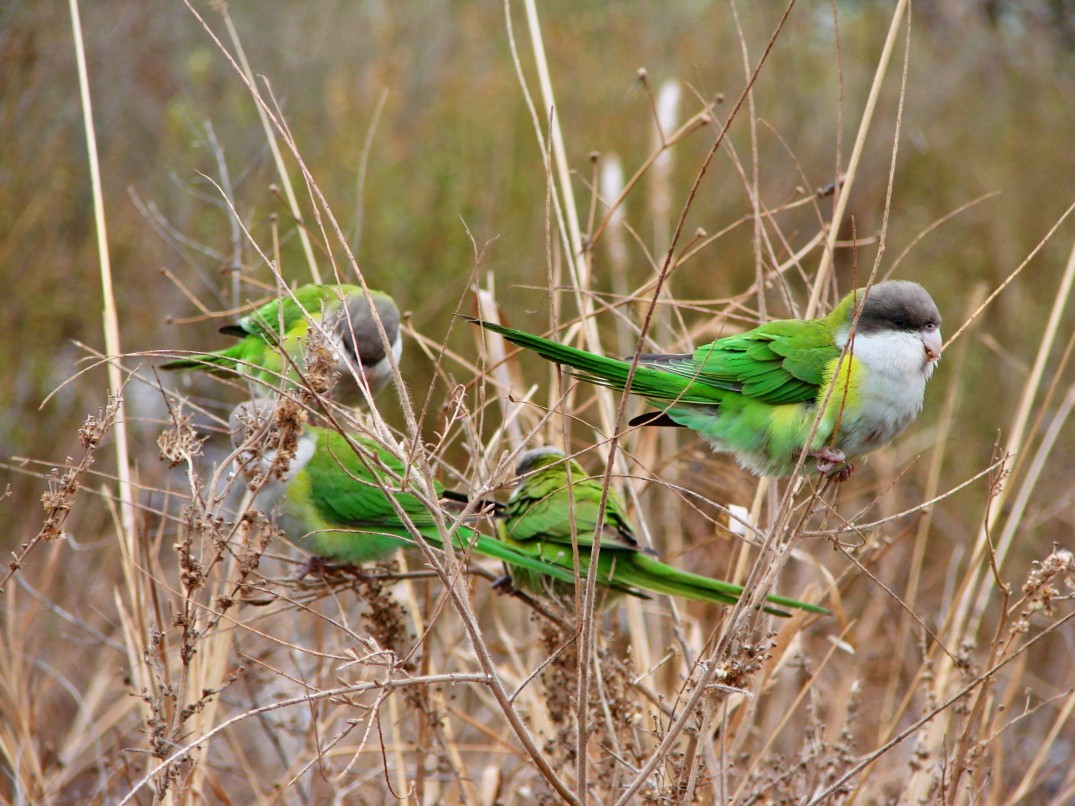Grey-hooded Parakeet
A species of Southern Mountain Parakeets Scientific name : Psilopsiagon aymara Genus : Southern Mountain Parakeets
Grey-hooded Parakeet, A species of Southern Mountain Parakeets
Botanical name: Psilopsiagon aymara
Genus: Southern Mountain Parakeets
Content
Description General Info
Description
The grey-hooded parakeet is a small, slender parakeet growing to a length of about 20 cm (8 in). The upper parts are green and the flanks and underwing coverts are greenish-yellow. The forehead and crown are brownish-grey, and the chin, throat and breast are whitish-grey, sometimes with a bluish tinge at the side of the breast. The belly is green with a bluish tinge. The upper side of the long, narrow, pointed tail is green and the underside is grey. The beak is flesh-coloured, the iris is brown and the legs and feet are brownish-grey. The sexes are similar in appearance, but the male often has a more vivid grey breast, and immature birds have shorter tails. 
Size
20 cm
Nest Placement
Cliff
Feeding Habits
Grey-hooded Parakeet's diet consists mainly of seeds from grasses and herbs, such as Viguera, as well as consuming berries from bushes. They forage these foods, adapting to eat a variety of plant materials found in their habitat.
Habitat
Grey-hooded Parakeet thrives in arid to semi-humid montane regions, primarily within the southern Andean Yungas. It frequents areas characterized by dense shrubbery, wooded ravines, and arid shrubby zones. This species is also adaptable to habitats altered by humans, such as near villages and agricultural lands. The altitudinal range where grey-hooded Parakeet is typically found spans from roughly 1,800 to 4,000 meters (6,000 to 13,000 feet), although sightings occur both above and below this elevation bracket.
Dite type
Herbivorous
General Info
Feeding Habits
Bird food type
Distribution Area
The grey-hooded parakeet is native to the southern Andean Yungas, its range extending from southern Bolivia to northern Argentina, and possibly the northern fringes of Chile. It is a bird of arid shrubby or wooded habitats, wooded ravines, and dense shrubby areas near villages or agricultural land. Its altitudinal range is from about 1,800 to 4,000 m (6,000 to 13,000 ft). 
Species Status
Not globally threatened.
